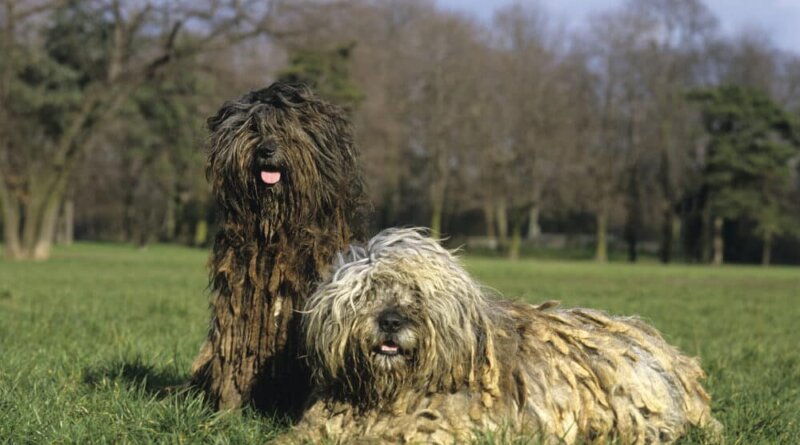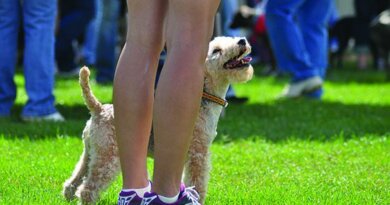What Are Corded Dog Breeds?
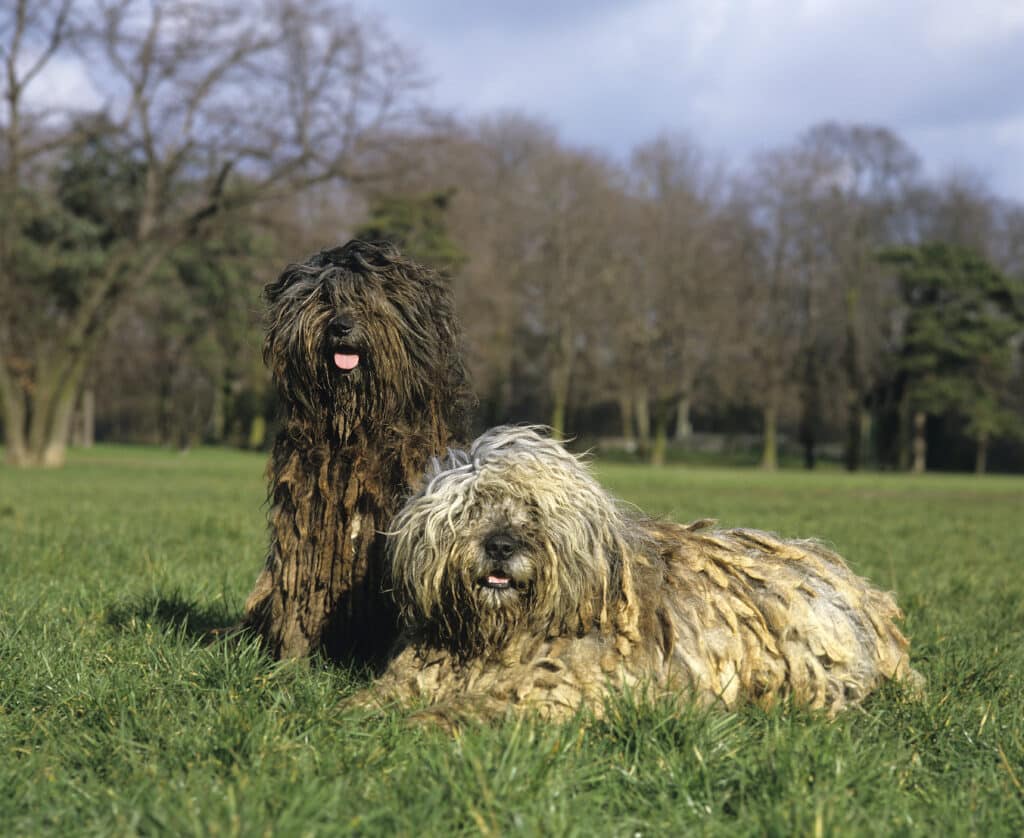
No two dogs are alike – all our furry friends have features that differentiate them from each other. For example, dogs with dreadlocks. Everywhere they go, these dogs always turn heads for their unique appearance thanks to their prominent dreadlocks.
For us hoomans, we call them “dreadlocks”, but in the doggo world, the correct term for this type of coat is “cords”. Sometimes they also refer to them as “flocks” or “mats”.
And dogs with this type of coat are known as corded dog breeds. In this article, we’ll dive in to the tangled world of these dogs. So, continue reading to find out more about them!
What Are Corded Dog Breeds?
Corded dog breeds are dogs said to have hair rather than fur. And they are not born with cords, but rather with curly hair that eventually begin to form as mats, and later on cords, as they grow up.
How Do Corded Dog Breeds Get Dreadlocks?
Corded dog breeds are not born with cords. Instead, they are born with wavy hair that become hoarse, will form mats, and later on become cords as they grow up.
Dogs with dreadlocks undergo a matting process, in which the owner starts getting involved to form the mats into cords correctly.
As a puppy, a corded dog’s hair will slowly become coarse. And around nine months, the coarse hair will begin forming mats, especially around their ears, limbs, legs and underarms.
For some dog breeds, once the matting starts, their hair will naturally cord up. But for some dogs, their hair do not naturally get curled or tangled into cords. However, since they have thick, curly hair, their owners can help them form cords.
Taking Care Of A Dog With Dreadlocks
Taking care of dogs with dreadlocks is not an easy task. Forming and maintaining their cords require many hours of laborious grooming and patience.
The tangled hair can easily collect dirt, mud, twigs, leaves and dust among other things. So, here are a few helpful tips when taking care of your corded friend:
Forming The Cords
It’s vital that you know how to help form the cords on your dog. Yes, some dog breeds’ hair naturally form cords, however your assistance is still important. Because there’s a chance that the hair will form one huge mat, which can make your pooch uncomfortable.
Here are a few helpful tips when forming the cords:
- Do NOT brush or comb the mats.
- If the coat is still quite fine, you can tear the mats by hand to split into small sections.
- However, if the coat is coarse, do not pull the dog’s hair with your hands. Use a scissor to help you.
- Work over several short sessions. Splitting the mats can take a lot of time. So, don’t worry if you can’t do it in one sitting.
- After splitting, watch as the hair begin to twist into cords.
Remember that transforming the dog’s cords is a long process. At times, dogs with dreadlocks get their perfect cords after a year or two.
Maintaining The Cords
Maintaining a dog with dreadlocks is very important. If you can’t commit to such task, then it’s best to consider other dog breeds. However, if you’re determined and willing, these tips will help you maintain your dog’s cords:
- Once the cords are properly formed, you need to trim (NOT cut) the hair to about three inches in length once every year.
- Trim the hair around their eyes, ears, legs and paws.
- Give the dog a bath once every few weeks or once a month, depending on their lifestyle.
- When bathing, make sure that the water and shampoo/conditioner penetrate the cords properly.
- Use a mild shampoo and moisturizing conditioner.
- Make sure to rinse out all the shampoo and conditioner from the cords.
- When drying a dog with dreadlocks, make sure to use a blow dry and that they are completely dry. This is a step that CANNOT be skipped. As cords can trap in dirt and encourage the growth of bacteria and mold. Furthermore, air-drying corded coat can take up to 48 hours.
Dogs with dreadlocks are without a doubt, labor-intensive. So, it goes without saying that you should have not only the right tools and products to make your job a bit easier, but also the right attitude.
However, if you cannot do these all by yourself, then it’s always best to consult with a professional dog groomer.
6 Popular Corded Dog Breeds
As mentioned above, there are dog breeds that naturally form dreadlocks and some breeds with coats that can be corded with a little help from their hoomans.
See below the six popular breeds of dogs with dreadlocks you should know about!
1. Komondor
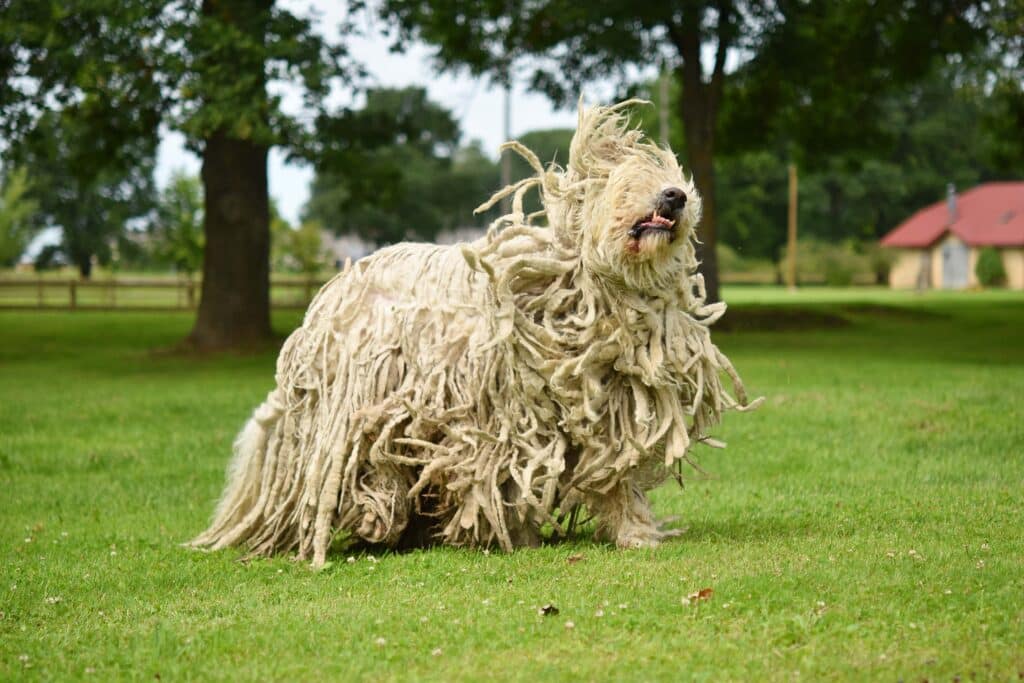


Officially declared as one of Hungary’s national treasures, the Komondor is possibly the most known corded dog breed. And they are one of the dogs with dreadlocks that grow up with natural-forming cords.
Furthermore, they are a large, livestock guardian dog with white dreadlocks. And it’s impossible to miss this breed for their eye-catching, tangled look and immense size.
While the Komondor is powerful and protective, it can be gentle and affectionate. And thanks to its white cords, it can perfectly blend in with the flock of sheep it protects, giving predators a nasty surprise!
2. Hungarian Puli
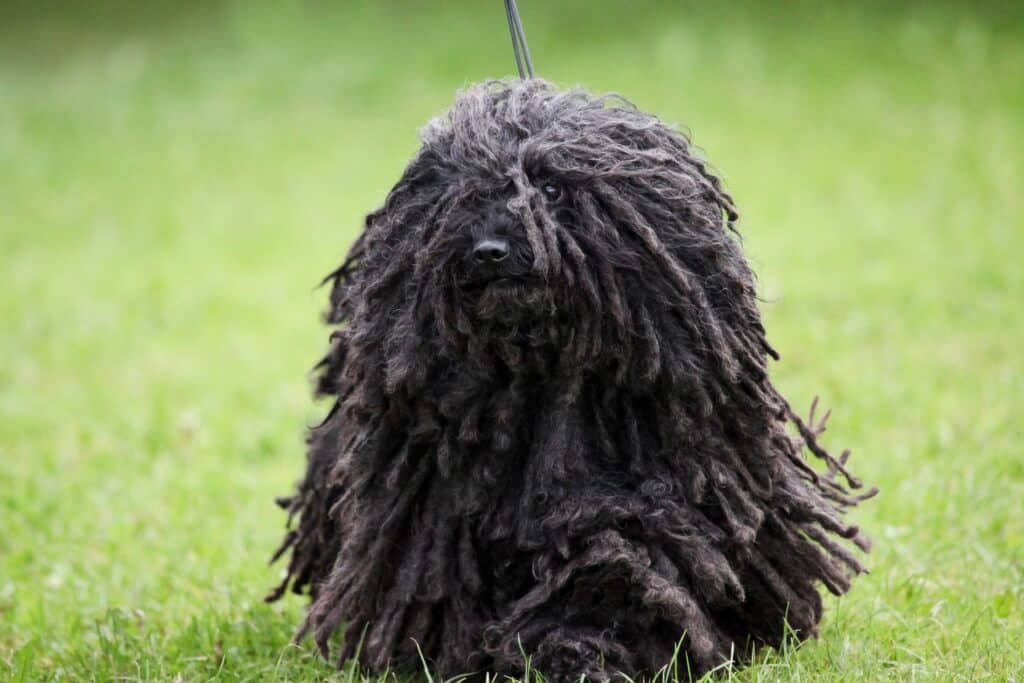


The Hungarian Puli share similarities with the Komondor – they grow up with natural-forming cords and are from Hungary. They basically look like a Komondor, but smaller.
The Puli, unlike the Komondor, are herding dogs. They are, therefore, active dogs. Thanks to their thickly corded coats, they are protected against harsh winter conditions.
In addition, they make great family pets since they are bred to work closely with humans. They are loyal, affectionate and intelligent.
3. Bergamasco Sheepdog
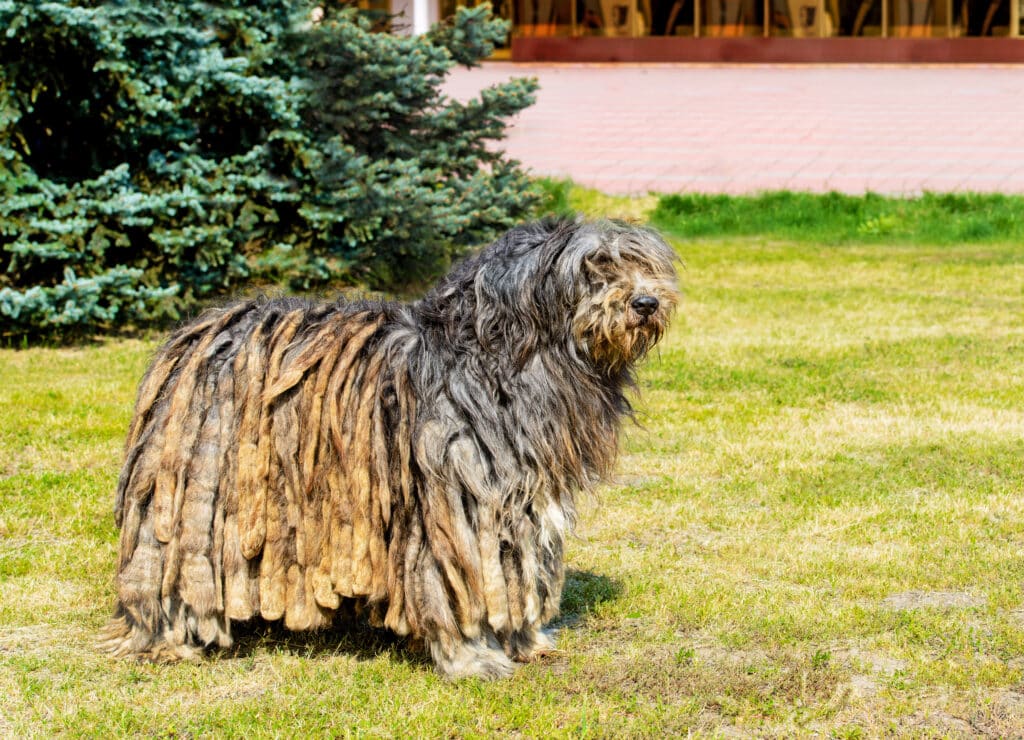


The Bergamasco Sheepdog is another herding dog breed. However, unlike the Komondor and Hungarian Puli, it has “flocks”.
What’s the difference between the above mentioned breeds’ cords with the Bergamasco’s flocks? Unlike cords, this breed’s flocks are irregularly large, flat and wide. Flocks can look like cords but with fan-like ends. So, the overall look of the dog is not like a “mop” at all.
Furthermore, among the dogs with dreadlocks, the Bergamasco Sheepdog’s coat is very unique because it consists of three types of hairs: a woolly outer coat, a long and rugged coat (referred to as “goat hair”), and a fine, dense, and oily undercoat.
4. Spanish Water Dog
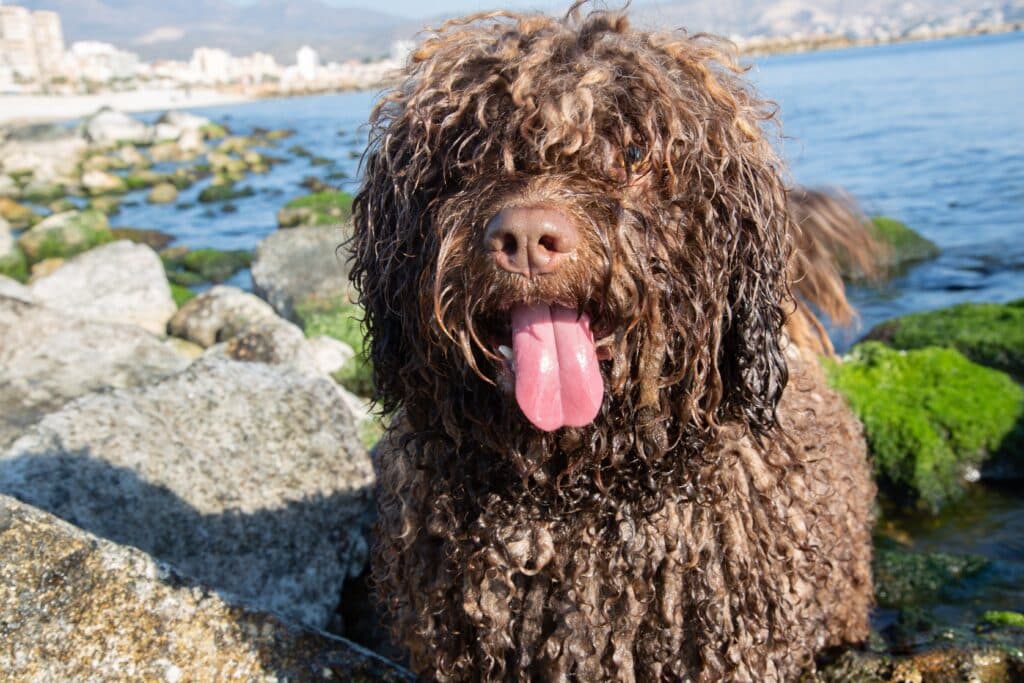


The Spanish Water Dog originated from the Iberian Peninsula of Spain. And based on its name alone, you’ll have a clue what kind of dog this rustic medium-sized pooch is.
They are used to herd cattle, sheep, and goats. And they are also amazing waterfowl retrievers, so YES they do love the water! So their coat is water-resistant and provides a layer of insulation that keeps them warm when they’re in the water.
Furthermore, Spanish Water Dog has a unique grooming requirement for its cords to form. You have to shave off its coat completely, and then let the hair grow out without brushing/combing it. And then that’s when the hair will start cording. But of course, a hooman‘s assistance is needed to form the cords properly!
And unlike the other dogs with dreadlocks, the Spanish Water Dog only has a single coat. However, the coat is thick, woolly, and is curly as it grows.
5. Havanese
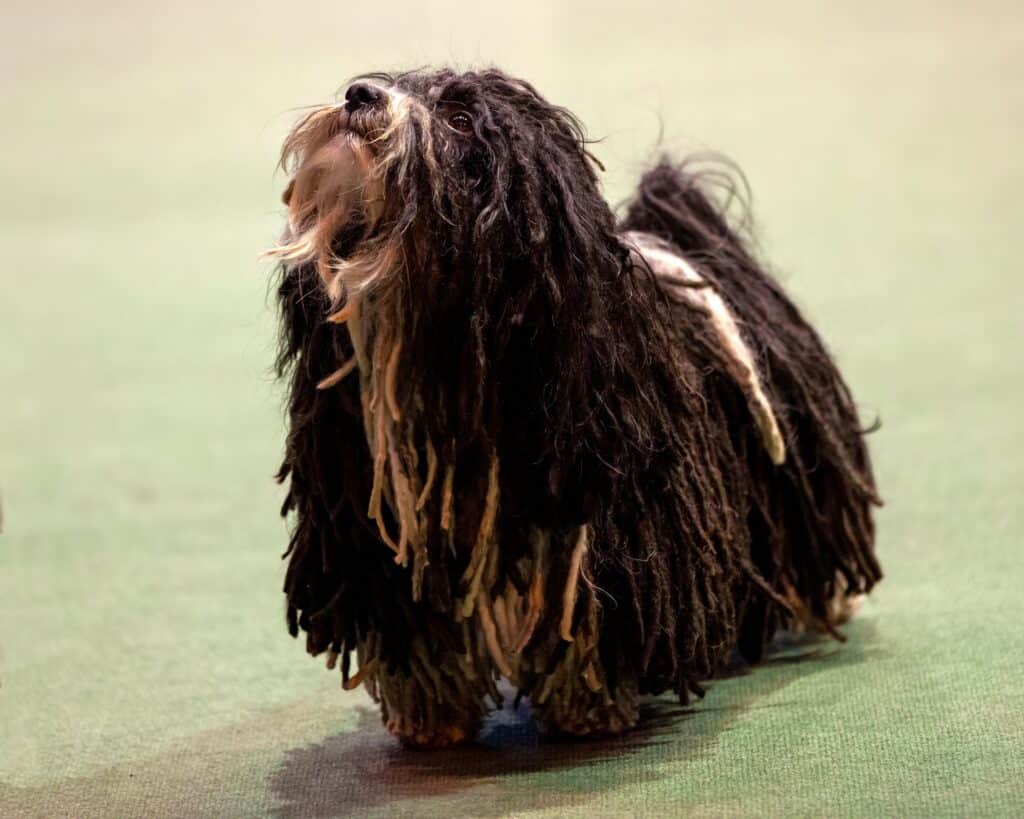


The Havanese is the smallest breed among all the dogs with dreadlocks. Naturally, their long coat is very lightweight and slightly wavy. And most of the time, Havanese dogs have brushed out hair.
However, since they have long, slightly wavy hair, they easily form mats. So, for their hair to turn into cords, their owner must tear the mats in their hair and split them into sections so they can start forming cords.
You have to be patient though, it can take a Havanese dog two years to achieve the perfect cords!
6. Poodle
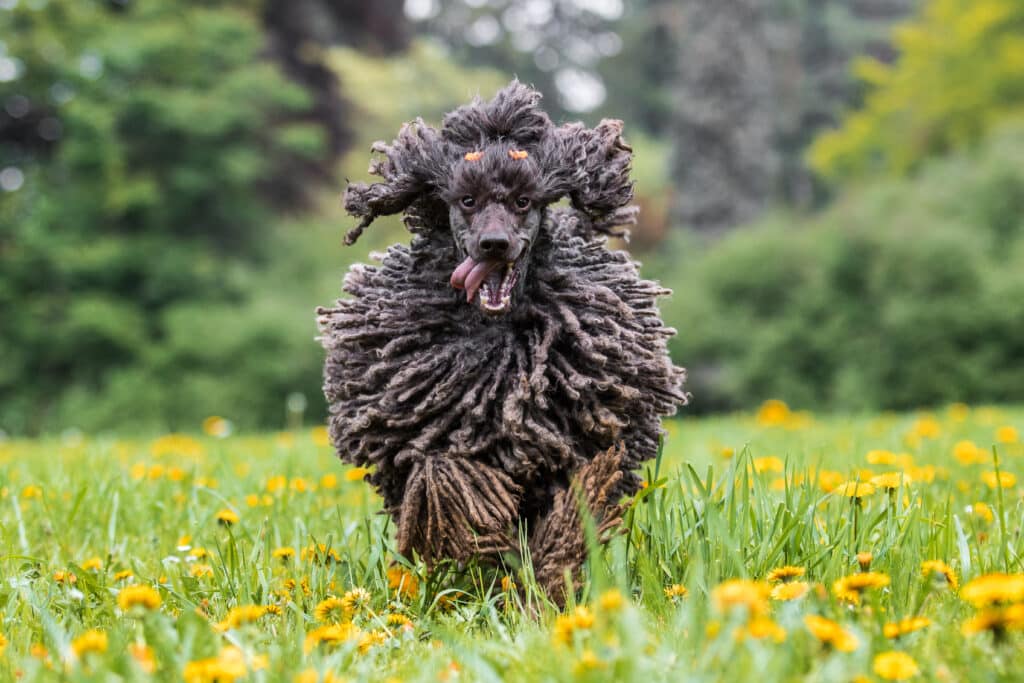


When we think of Poodles, we think of all the ways their hair gets perfectly styled. But did you know you can also cord this dog breed’s hair?
Among all the dogs with dreadlocks we mentioned, cording doesn’t come naturally to these pooches. Their thick and curly coat can definitely be corded with a hooman‘s help. Furthermore, most Poodle dogs with dreadlocks are Standard Poodles, but the Toy and Miniature’s hairs can also be corded.
And since they do not have natural-forming cords, Poodle dogs with dreadlocks are quite uncommon.
Conclusion
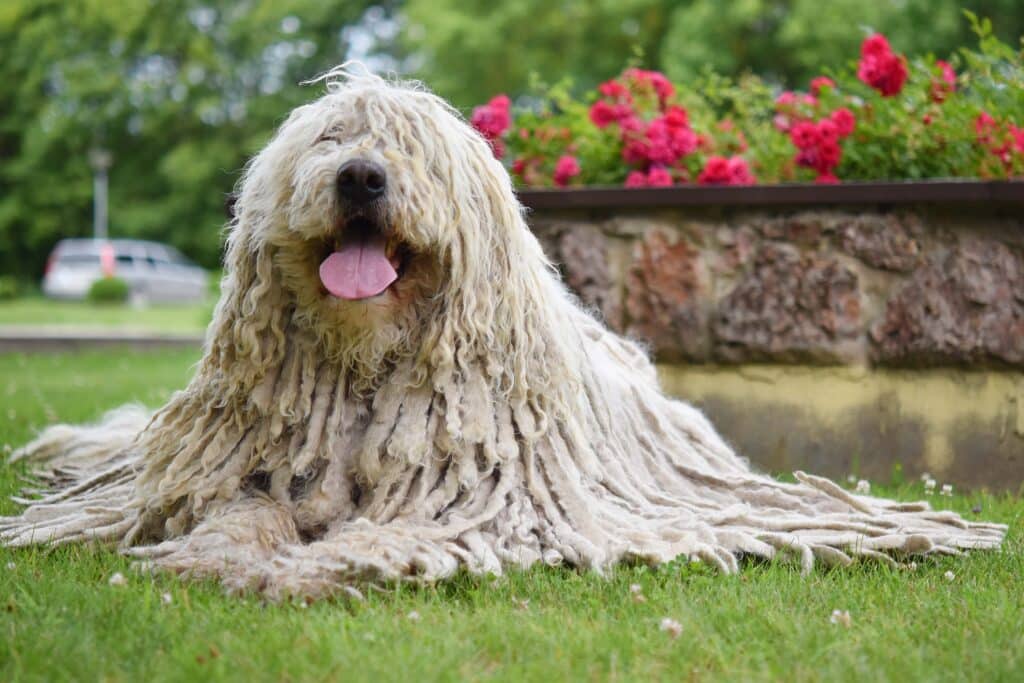


Dogs with dreadlocks require a lot of effort, patience, and time but are definitely beautiful companions. Aside from their head-turning appearance, they have amazing personalities to boot.
If you’re considering adopting or buying any corded dog, doing your research on the breed and understanding the laborious grooming requirements is a MUST.
It’s also important to make sure that you are ready for the responsibilities and is ready to commit time and resources to properly take care of such dog.

